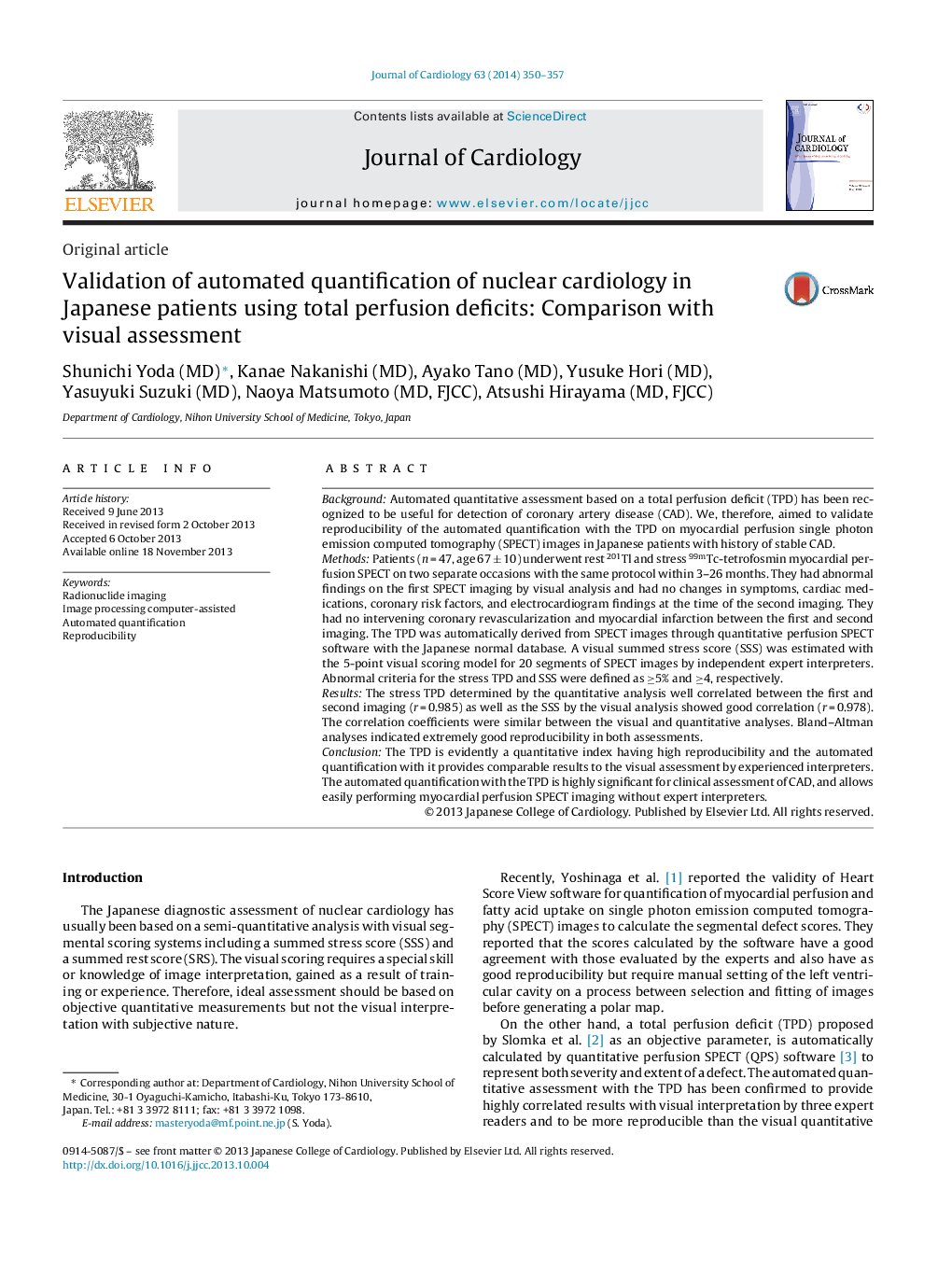| کد مقاله | کد نشریه | سال انتشار | مقاله انگلیسی | نسخه تمام متن |
|---|---|---|---|---|
| 2963039 | 1178526 | 2014 | 8 صفحه PDF | دانلود رایگان |
BackgroundAutomated quantitative assessment based on a total perfusion deficit (TPD) has been recognized to be useful for detection of coronary artery disease (CAD). We, therefore, aimed to validate reproducibility of the automated quantification with the TPD on myocardial perfusion single photon emission computed tomography (SPECT) images in Japanese patients with history of stable CAD.MethodsPatients (n = 47, age 67 ± 10) underwent rest 201Tl and stress 99mTc-tetrofosmin myocardial perfusion SPECT on two separate occasions with the same protocol within 3–26 months. They had abnormal findings on the first SPECT imaging by visual analysis and had no changes in symptoms, cardiac medications, coronary risk factors, and electrocardiogram findings at the time of the second imaging. They had no intervening coronary revascularization and myocardial infarction between the first and second imaging. The TPD was automatically derived from SPECT images through quantitative perfusion SPECT software with the Japanese normal database. A visual summed stress score (SSS) was estimated with the 5-point visual scoring model for 20 segments of SPECT images by independent expert interpreters. Abnormal criteria for the stress TPD and SSS were defined as ≥5% and ≥4, respectively.ResultsThe stress TPD determined by the quantitative analysis well correlated between the first and second imaging (r = 0.985) as well as the SSS by the visual analysis showed good correlation (r = 0.978). The correlation coefficients were similar between the visual and quantitative analyses. Bland–Altman analyses indicated extremely good reproducibility in both assessments.ConclusionThe TPD is evidently a quantitative index having high reproducibility and the automated quantification with it provides comparable results to the visual assessment by experienced interpreters. The automated quantification with the TPD is highly significant for clinical assessment of CAD, and allows easily performing myocardial perfusion SPECT imaging without expert interpreters.
Journal: Journal of Cardiology - Volume 63, Issue 5, May 2014, Pages 350–357
